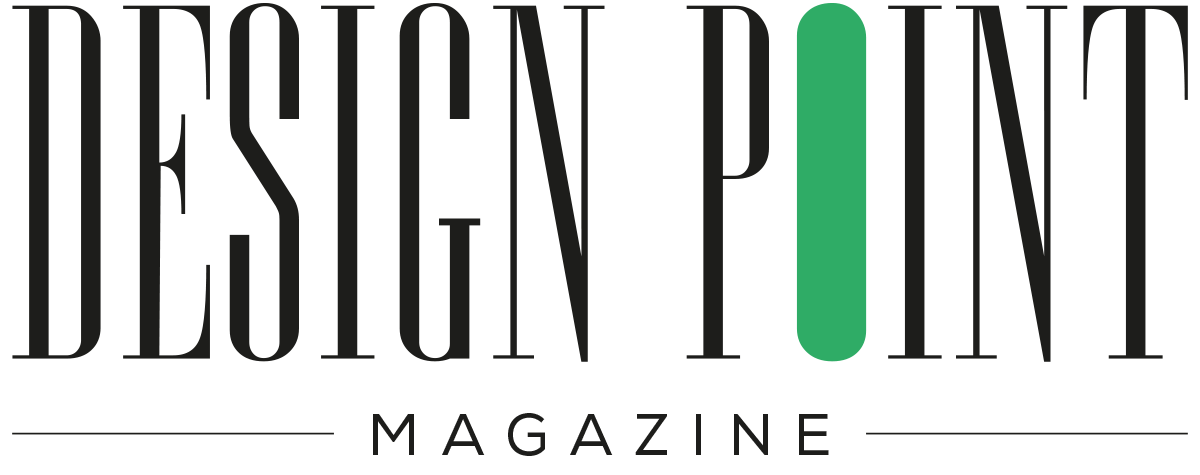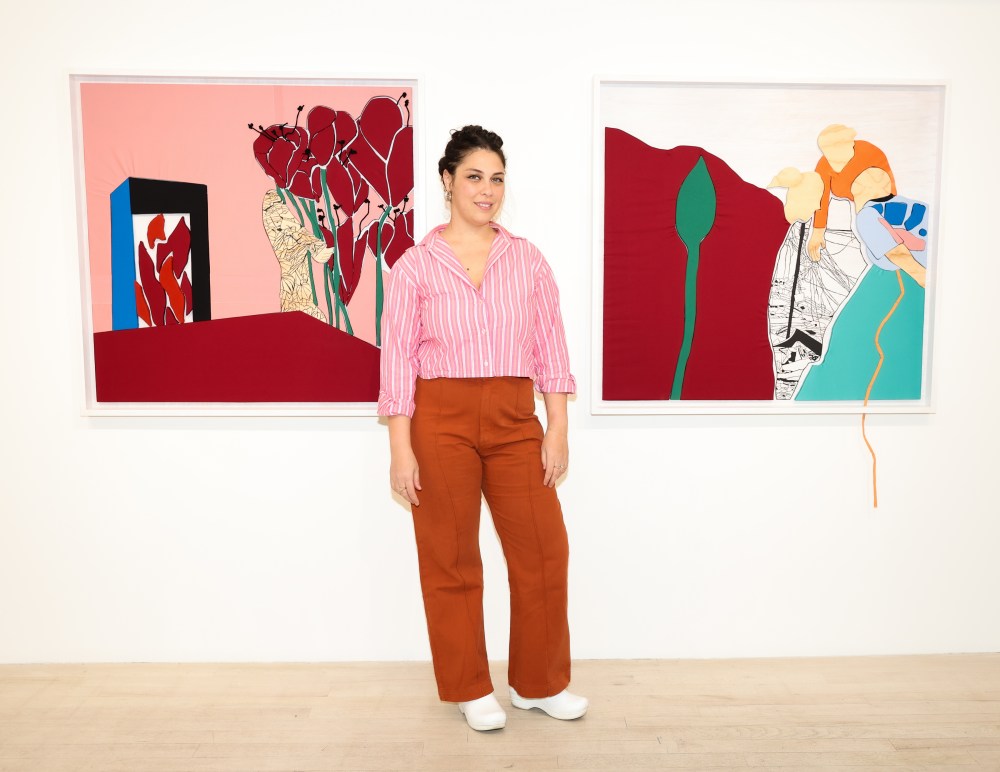How do I hold both the act of bringing life into the world and the devastation of so much loss at the same time?
New mother Noa Yekutieli poses this question among many others in her latest exhibition The Intimacy of Distance, on view now at the Hannah Traore Gallery in New York City. The mixed media artist centers her practice on exploring tension and contradiction, searching for meaning in friction and harmony in concepts that clash. This worldview has been shaped in large part by Yekutieli’s multicultural upbringing as a Japanese-Isreali, born in California and raised in Tel Aviv. Having recently become a mother, her artistic point of view has developed yet another dimension, with all of these ideas commingling within The Intimacy of Distance in works composed of paper-cut, hand-cut wood, and found textiles.
Noa Yekutieli
Yekutieli reflects on the themes she mines in The Intimacy of Distance and what has led her to her unique ethos as an artist below. (Responses were lightly edited for length and clarity).
Left: Without friction you don’t have motion (2024)
Right: When it’s all you can see, it’s all you can see (2024)
What’s your artistic background? Can you give a brief summary of your journey to where you are today?
I was born in Fountain Valley to a Japanese mother and an Israeli father. I moved to Tel Aviv when I was young, without ever having visited before or knowing the language, which deeply shaped the way I perceive the world. It sharpened my sensitivity to non-verbal communication as a way of understanding my surroundings, ultimately leading me to make art. Growing up in the complex reality of the Israel-Palestine ongoing conflict, craft became my therapeutic outlet for processing the intensity and weight of my environment.
Growing up in the complex reality of the Israel-Palestine ongoing conflict, craft became my therapeutic outlet for processing the intensity and weight of my environment.
As a self-taught artist, I often felt that linguistic communication—especially when it carried aggressive, militant, and masculine tones around political subjects—tended to create more conflict rather than allow empathy. This lack of space for nuanced dialogue led me to seek an alternative language— one that I found in the meditative craft of manual paper-cutting, which provides me with a space to slowly process, reflect, and reveal both collective and personal unconscious destructive patterns.
Left: Detail of/ Leaning fearfully to feel the growth (2024)
Right: Detail of/ We can continue wrapping ourselves with terms of nature (2024)
A central theme of The Intimacy of Distance is motherhood, inspired by recently becoming a mother yourself, and you also explore your multicultural background. Why is mining such personal aspects of your life so important to your practice?
I think we all agree that context shapes our perception of things. Where we come from—our background—shapes the lens through which we view the world, including our proximity to a certain defining moment in history, and what we’re going through in our personal lives shapes how we see what’s happening around us.
Coming from a multicultural background has always placed me in a complex position when it comes to feeling “home.” This has become even more profound now as a mother, as I think of what patterns places bring with them.
Coming from a multicultural background has always placed me in a complex position when it comes to feeling ‘home’. This has become even more profound now as a mother.
Becoming a mother really shifted my focus— at least in these first months, which I am still experiencing. I worked on this show during my pregnancy, and right after giving birth— a very specific state of mind to exist in. I think it’s important to note this when viewing the work, as it unfolds questions of home from a deeply maternal perspective, from the very personal to the very political.
For me, being pregnant and giving birth during such a painful time of war and loss in Israel and Palestine was an overwhelming contrast— the preciousness vs. the brutality, personal growth vs. collective destruction, intimacy vs. distance. These forces are in constant negotiation within me and my work when thinking of home and what we belong to. I question what patterns I carry and potentially pass on, especially as a mother. I now have a different sense of agency and urgency— these forces fight each other, camouflage each other, and sometimes merge into one another.
I continuously grapple with the question of how these opposing realities coexist. How do I hold both the act of bringing life into the world and the devastation of so much loss at the same time? These questions sit at the core of this exhibition, driving me to explore the spaces between creation and destruction, presence and absence, home and alienation. The transformation of becoming a mother during this horrific time of war forced me to change familiar ways of working— boundaries blurred, raising the question of where I end and something/someone else begins. While working, this extended beyond the personal into my relation to place, space, territory, and motherhood.
Left: Sometimes I need to hold my head to find it (2024)
Right: Thank you for carrying (2024)
Why is a combination of paper, wood, and textiles the right medium or form in which to convey these ideas?
Relocating as a child and growing up in a multicultural household—between opposing cultures of two very different worldviews, Japanese and Israeli—left me constantly assembling and piecing together different parts of my identity for myself. This fragmented experience is deeply reflected in my material approach, where I never aim for a singular, cohesive form. Instead, I am drawn to the tension and dialogue between contrasting materials—how they come together, resist, or merge.
I am drawn to the tension and dialogue between contrasting materials—how they come together, resist, or merge.
The works in this exhibition are made from hand-cut black paper, hand-cut wood, and found textiles—each material carrying its own symbolic and physical weight. The manual paper-cutting process, rooted in my Japanese and Jewish heritage, examines patterns of human destruction. The wood, in contrast, organically contains patterns formed by nature. This juxtaposition between nature and destruction raises a fundamental question: Are these violent cycles naturally inherited in us, or does the concept of “the nature of things” create a passive acceptance of war as a solution to conflict and opposing narratives?
Then, the textiles introduce another conversation— they are colorful, soft, and flexible, absorbing and covering like stretched skin over rigid wooden structures. They evoke domesticity and memory, contrasting with the destruction embedded in the paper-cut images.
Left: Saving flowers from the fire (2024)
Right: One feels it’s carrying, the other can’t stand (2024)
Can you share more about the Japanese term Ma (間), and how its complexities play into the exhibition?
The patterns within the paper-cuts are derived from photojournalistic images of destruction— particularly from the war in Gaza. As an Israeli, I feel a responsibility to closely examine the consequences of our actions, which are often intentionally hidden from us. The voids I cut into the paper symbolize these blind spots— the erasure of what we choose not to see. In some works, imagery of destruction becomes an abstract pattern that appears on the characters’ clothing, carried almost unnoticeably from one place to another, from one history to another, from one generation to another.
Ma (間) is a Japanese term that represents the space between two objects, but it is not a passive space; it is an active space that holds possibility. While working on this exhibition, I thought a lot about borders— between me as a mother and me as an artist, between narratives of home and land. These are both potential points of friction. Yet, although the works are full of borders and separate elements being pulled together, I choose to see these spaces not as divisions, but as meeting points— a fractured whole.
Although the works are full of borders and separate elements being pulled together, I choose to see these spaces not as divisions, but as meeting points— a fractured whole.
I explored the possibility of seeing the space between things as something that connects rather than divides. Through the negative spaces in the works—both in the paper cuts and the wooden forms—I explore what binds us together and what keeps us apart. I wonder if a clearly defined boundary paradoxically creates space to reconcile a shared boundary rather than division. Spending hours in the studio cutting into paper—creating through subtraction—the image emerges from what is missing rather than what is present. This process mirrors how trauma, which often remains unseen, can become ingrained and cyclical— how past patterns of violence unconsciously shape the current pattern of violence.
Noa Yekutieli, Atmar Giladi
The post Noa Yekutieli Explores Tension and Contradiction in her Exhibition ‘The Intimacy of Distance’ appeared first on PRINT Magazine.

